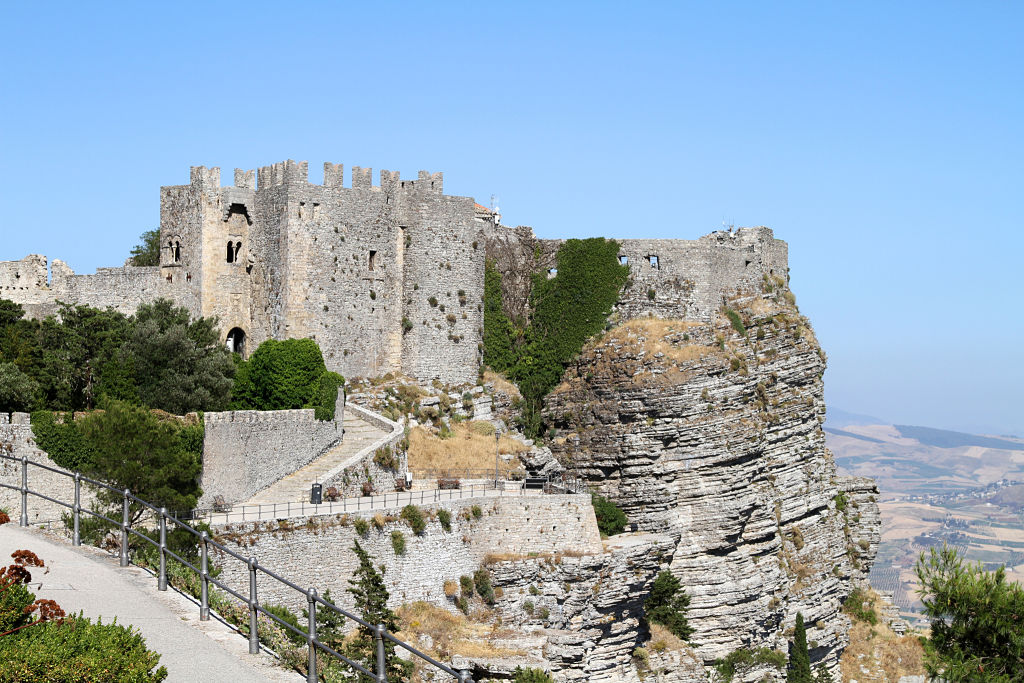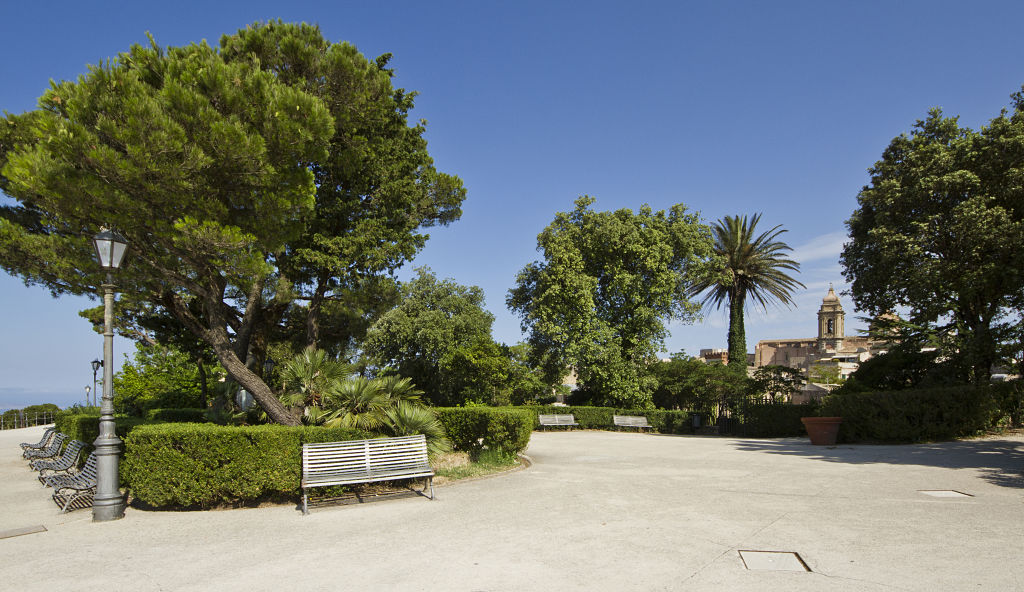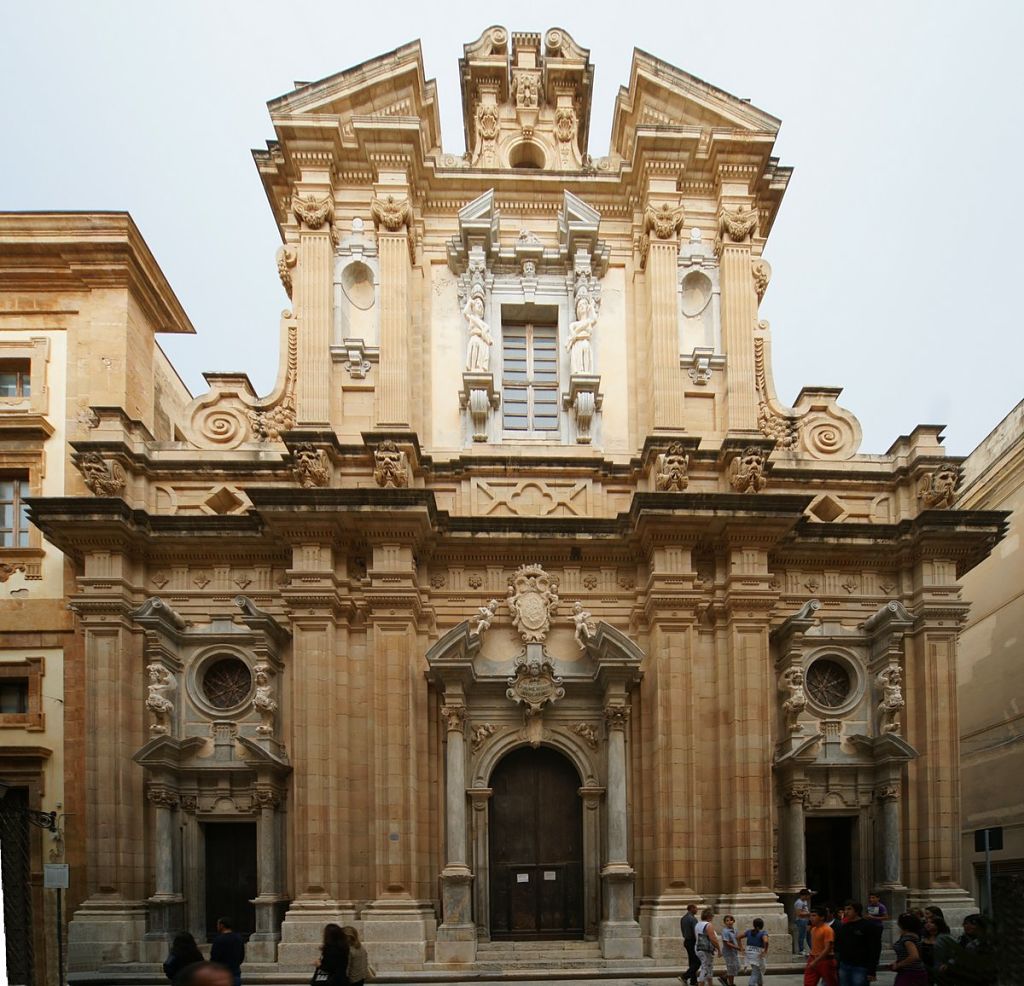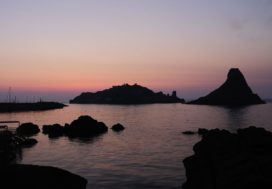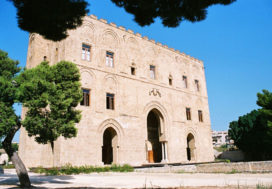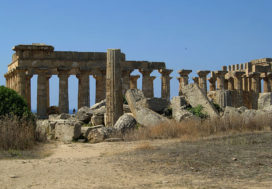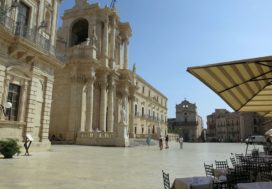Booking your holiday at Dream House, located in Castellammare del Golfo, in the province of Trapani, Sicily, you will discover the rich historical and cultural heritage of this magnificent region.
Scopello
Scopello is a small village populated by only 118 inhabitants. Its name come from the Greek skopelòs, which means rock, due to the presence of the characteristic Faraglioni.
It was born as a fishing village and the Faraglioni beach and the tonnara (tuna fishing) are the most interesting points of the area. The tonnara was built in the 13th century, and was used until the 60s of the 20th century as a storage of fish and as accommodation for tonnarotti (tuna fishermen).
Segesta
The archaeological park of Segesta is a place of great historical interest, in which we can note the alternate of the different populations that settled there.
The ancient city was located on the top of Monte Barbaro, and was surrounded by walls.
Outside the walls there are two important sacred places: the Doric temple (430-420 BC) and the Contrada Mango sanctuary (VI-V century BC).
Outside the walls, a Hellenistic necropolis has been identified, as well as Muslim and Norman – Swabian settlements.
Erice
The Real Chiesa Matrice Insigne Collegiata, known as Real Duomo or Duomo of Erice, was built by Frederick of Aragon in the 14th century. He decided to thank the Erice population who helped and protected him during the war between the Angevins and Aragonese, and titled the Duomo to the Assumption of the Virgin. The bell tower, 28 meters high, has three levels and is illuminated by monofore and biforate windows on the various floors. The exterior of the Duomo maintains its original appearance, while the interior is a 19th century neo-Gothic reconstruction. The side chapels host works by Gagini, Laurana, Mancini and other artists. The treasure of the church contains one of the most precious silver collections in Sicily.
The Castello di Venere (castle of Venus) is a Norman fortress built on the ancient sanctuary dedicated to Venus, from which it takes its name. After passing the property between the Aragonese and the Bourbons, at the end of the 19th century, it passed to Count Agostino Sieri – Pepoli in exchange for a restoration. The façade of the castle, facing west, is dominated by Ghibelline battlements, and it is possible to observe the entrance to a secret gallery, which originally led out of the castle.
San Salvatore Monastery was built thanks to Count Enrico Chiaramonte. In 1290, the count was accused of murder and high treason, but was later absolved by King Charles of Anjou.
As a act of gratitude, he decided to transform his palace in Erice (where he lived in exile) into a monastery dedicated to San Salvatore, where the first Benedictine monks went to settle. Then, the monastery became very important and was greatly expanded thanks to the finances of the monks, who came from rich and noble families.
Gardens of the Balio. Terraces and gothic pavilions characterize the Balio garden, a very scenic complex that includes a rocky area in romantic style, parterre and entrance in Novecento style. The Count Agostino Sieri-Pepoli built it in 1872 thanks to an agreement with the town of Erice.
Trapani
Trapani is also known as “the city of a hundred churches”, due to the large number of religious buildings. Almost all the churches are in Baroque style, and among the most important you will find the Cathedral of San Lorenzo, the Church of Santa Maria del Gesù, the Church of the Collegio, the Badia Nuova, also known as S. Maria del Soccorso, the Church of Purgatory and the church of S. Pietro, famous because it was the first Christian church built in Trapani.
The Cathedral of San Lorenzo dates back to 1102, and over the centuries has undergone numerous renovations and transformations. Today it looks like a Baroque-style building, with two lateral bell-towers and a huge dome, surrounded by four smaller domes.
The Cathedral is decorated with fine frescoes representing biblical episodes, and also houses the famous “Crucifixion” by the Flemish painter Van Dyck.
Piazza Mercato del Pesce. The current appearance of the Piazza was conceived in 1874 by Giovanbattista Salotti, with a portico with round arches and, in the middle, a fountain of Venus Anadyomene. Until 20 years ago, the Piazza was used as a fish market, but is now used for fairs, events and festivals.
The salt flats of Trapani have ancient origins, maybe founded by Phoenicians.
As you access to the salt flats, you can see the characteristic piles of salt piled up and covered with red tiles. The place used for the salt milling, with the large attached windmill, has now become a museum to preserve the ancient working tools of the salt workers and many old black and white photos, evidence of this traditional work in Trapani.



